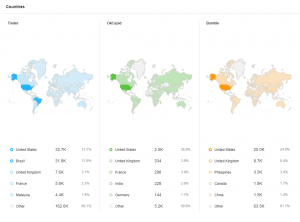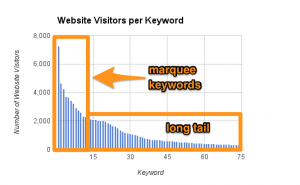
There is no doubt that our cell phones are an integral part of our lives. If you don’t believe me, try going a day without it. Because of this, as business owners, we have made sure that our sites are mobile friendly. At least, you think you have.
Responsive sites are not necessarily the answer
These days many websites are responsive website designs. What that basically means is the site conforms naturally to the size of the screen it is viewed on. It doesn’t matter if it is a 27 inch monitor or an old iPhone the size of the page will magically conform to the size. If you use a common website development platform like WordPress, many of the themes are “mobile friendly”. I argue they are not.
In a typical responsive site, the right column moves below the left column. This makes sense as much of the main content is on the left hand side of the page when viewing on a desktop. However, what if you included important information like a signup form or search function? Those important conversion interactions would now be at the bottom of all that content. If you couple that with the fact that only half of your viewers on a mobile site actually reach the footer of the page, that is a bunch of lost opportunity. The site looks nice on a mobile phone but it is not very useful. Something consider as well is how much of your traffic is really coming from a mobile device. If it more that forty percent then it is probably not a good idea to rely on a responsive design for your mobile experience.
Over 50% of searches take place on mobile devices
According to a recent study, mobile searches have reached their tipping point. If you are a business that relies on your website to drive traffic, consider that one out of every two visitors is coming to your site on a mobile device. Take a good look at your site on your phone, how far down does the visitor have to scroll to get to the information you want them to see? That beautiful panorama on your desktop site is not only really small on your phone, but between the header and that image, you have taken up nearly half of the screen which means that the visitor needs to start scroll immediately. Many do not.
Is this really needed on the page?
Responsive websites do not do a good job on their own at subtracting what is not necessary at a particular time. This is why planning out what the viewer sees immediately is very important. Like that desktop panorama which makes a great impression when the visitor lands on the site is not so impressive as a thumbnail image. If this wonderful image has a call to action button as well, the button and text will really be small. If your demographic is older it might be hard for them to read, so the likelihood that it is going to make an impression is small (pun intended).
When planning out your mobile site something to consider is that you want to make content bigger. I am not just talking about text but buttons, navigation and even important images have to be easy to see and easy to click on. If you have an image that is a diagram or has a bunch of text on it, when it shrinks down to the mobile size, all that text shrinks as well. Also consider people with thick fingers, small buttons may be hard for them to click on if they are not spaced properly. Nothing leads to abandonment quicker than frustration.
Size does matter and so does speed
Responsive sites shrink existing content down. It’s convenient but not very practical. Going back to the panoramic on your desktop site, for that image to be clear on a 27 inch monitor, it has a be a fairly large image. On a mobile device over a poor data connection that could take two or three seconds to load. In other words, that call to action may never be seen because either the viewer has scrolled down or even worse, left. Site speed is very important.
When you plan your mobile site, you have to consider mobile bandwidth as well. You can’t assume that every person will have a perfect connection to view your site. This is why it is important to plan the mobile site and test how fast it will load. A typical responsive website loads in about 4 seconds. Do this test for me, stare at your phone for four seconds straight. It’s a long time. A mobile site has to load nearly immediately. Again you have to ask yourself, what is really needed to get your message across, from there, subtract some more, and then you should be good.
Separate rankings for mobile
As if user experience and site speed isn’t enough to worry about, a few months back Google decided to have a different ranking algorithm for mobile. Google never really lets you peek behind the curtain but I am willing to bet that usability and site speed are ranking factors along with content. My guess, and it’s a pretty good one, is that Google will not rank non user friendly sites at the top of the list on a mobile device.
The takeaway is that it is as important to plan a mobile site as much as you plan your desktop site. The mobile site should have its own design and it should be a minimalist approach to your desktop site. That doesn’t mean you can’t have beautiful images, it just means you have to make sure a small, low res version is served to your mobile site. Many responsive designs just shrink and reposition. A true mobile site is planned and tested separately. It should have the same impact as your desktop but in a different way. As Ben Franklin supposedly once said, “If you fail to plan, you are planning to fail.”
This article was originally published at www.migmanmedia.com.
Digital & Social Articles on Business 2 Community(71)
Report Post







